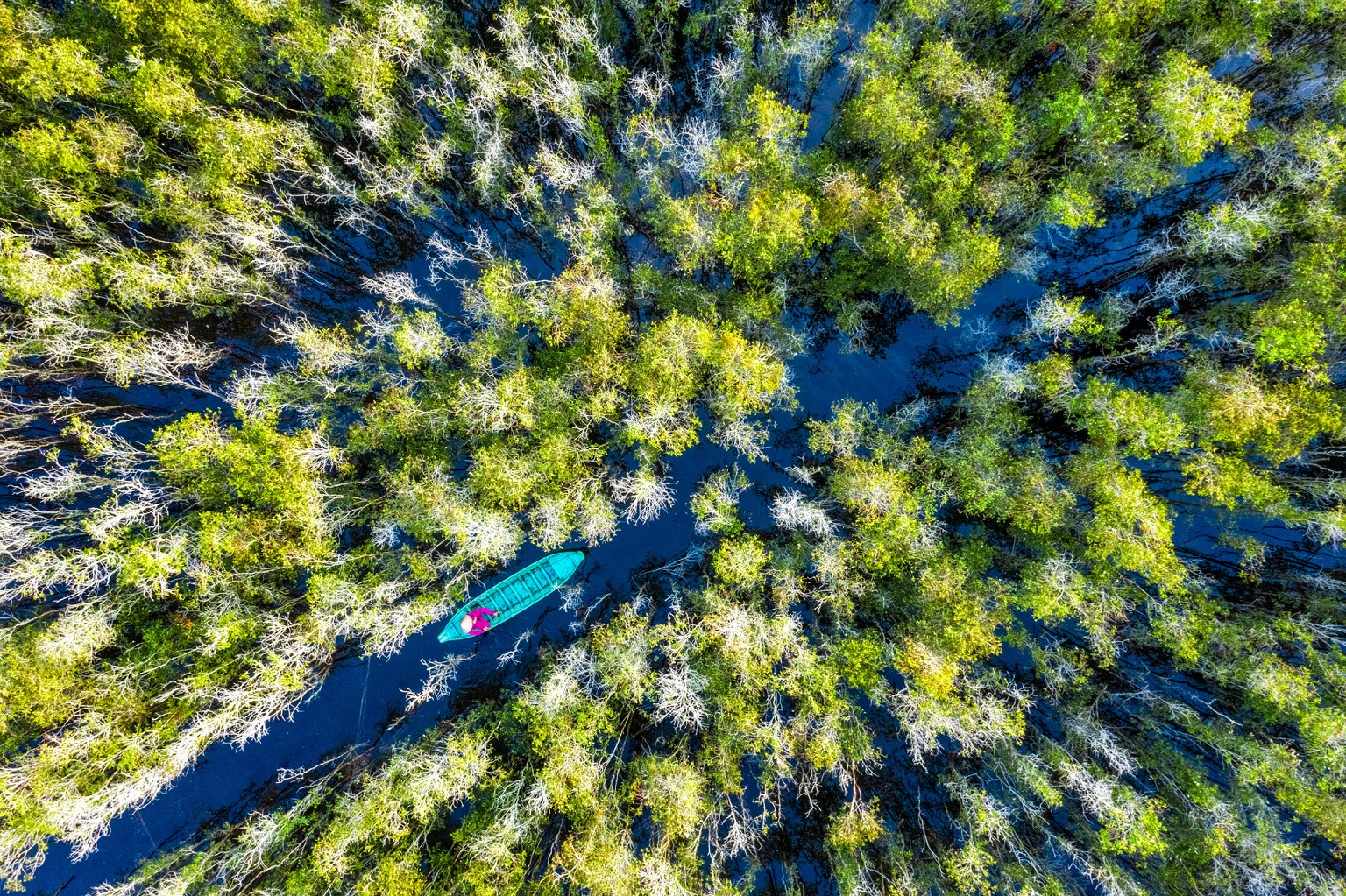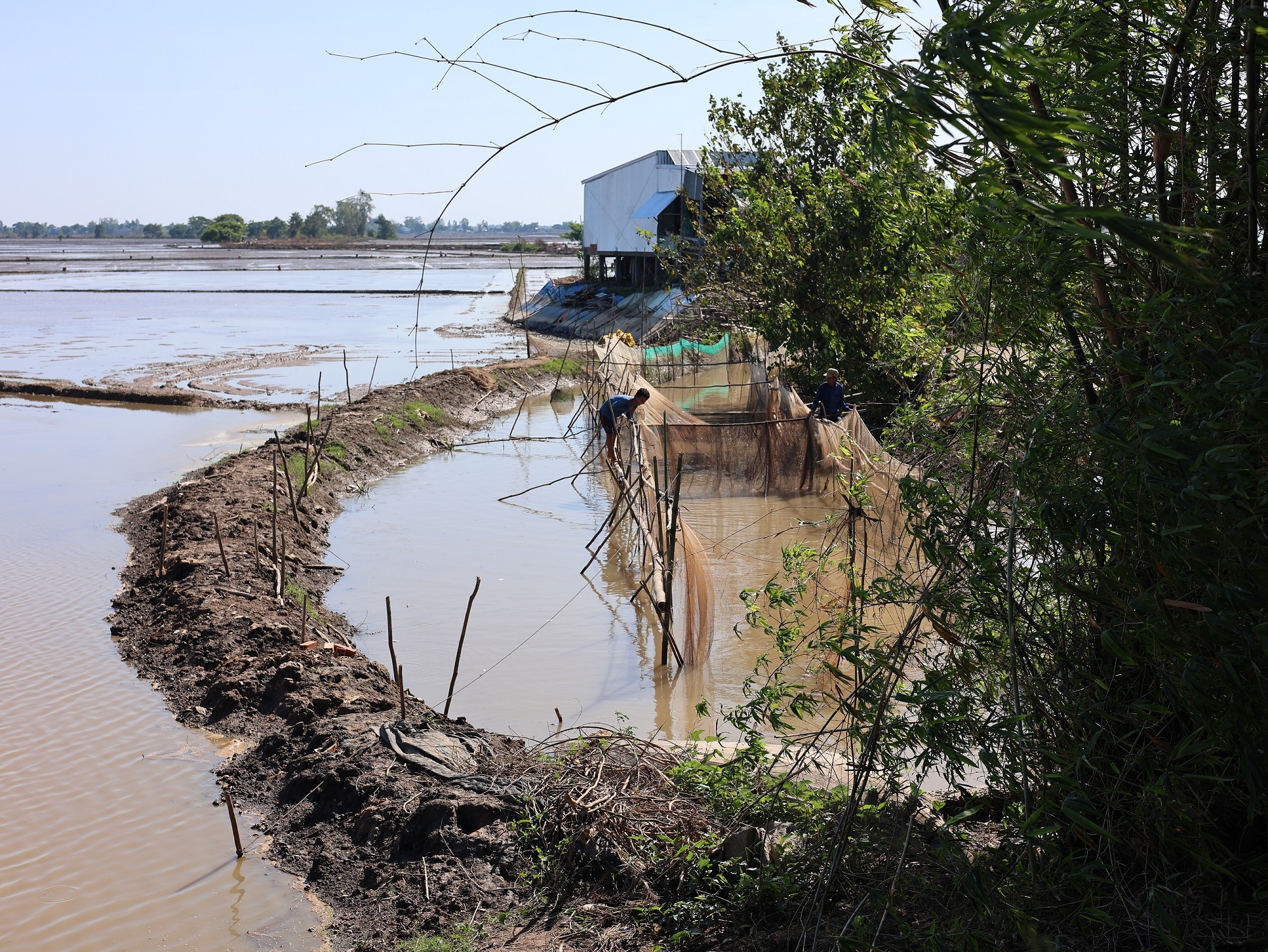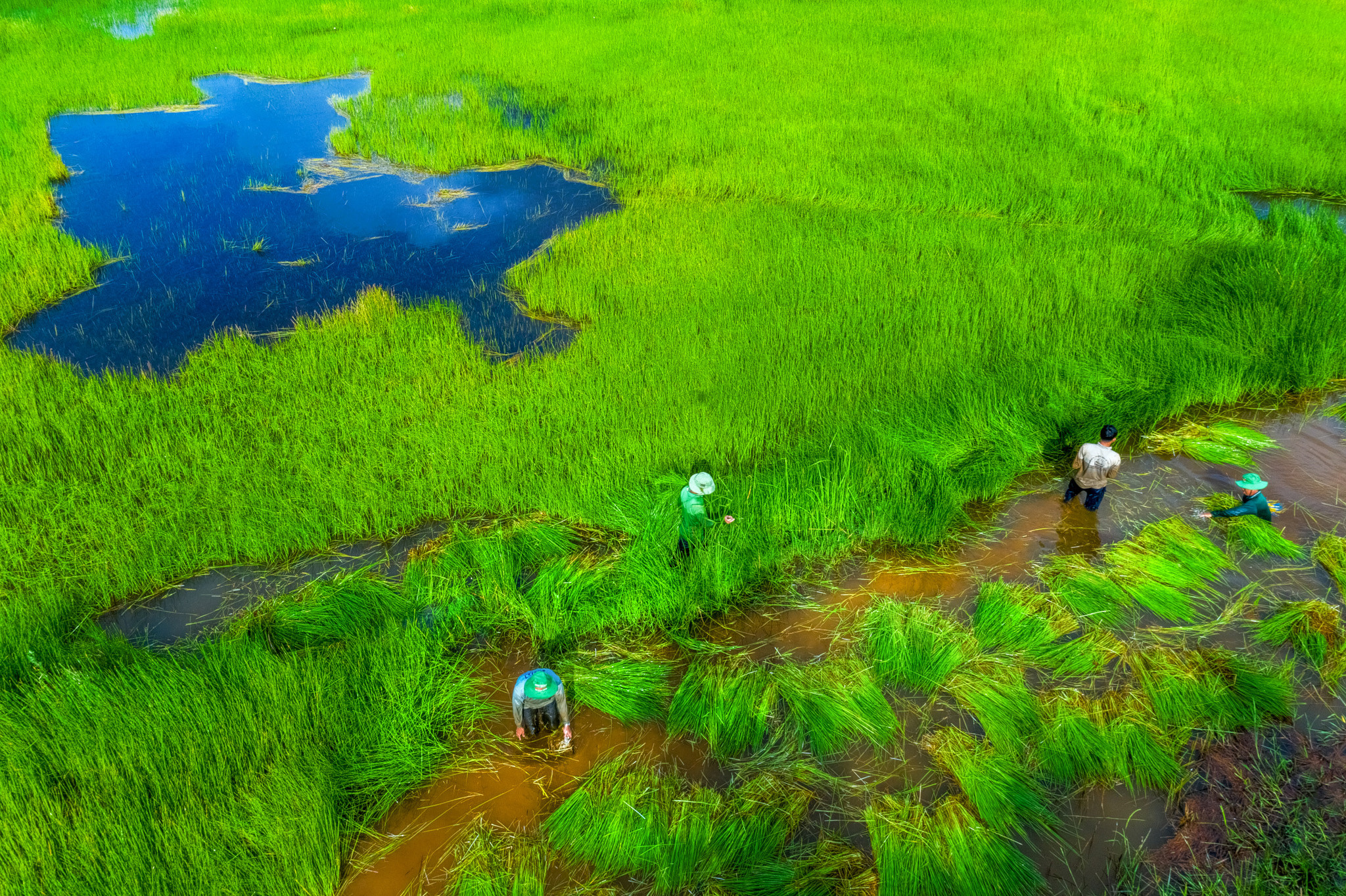It was a classic vista: the mild December sun setting over the vast wetlands of Tram Chim National Park in the Dong Thap province of Viet Nam – the horizon awash in hues of amber and gold. The sky is alive with the flight of over 1,000 1.8-metre-tall sarus cranes (Antigone antigone), with their graceful silhouettes dancing across the pastel background of the Mekong Delta, as they journey on their migration from their breeding grounds in Cambodia.
This was a typical sunset scene in 1988, but such a sight has not been seen in nearly 40 years.
The loss of key plant species in the Tram Chim wetland ecosystem has caused the number of returning birds to plummet. By 2022, not a single sarus crane – the world’s tallest flying bird and a symbol of Dong Thap’s natural and cultural heritage – was seen soaring into the sky of Tram Chim.

From Global Insight to Local Action
Reversing such a profound loss is still possible today through evidence-based and coordinated action that works alongside – rather than against – nature.
This is where the Biodiversity and Ecosystem Services Network (BES-Net), an IKI project, steps in.
With the generous support of the Government of Germany, BES-Net’s seed funding (or BES Solution Fund) is dedicated to supporting the Vietnamese Government in translating global biodiversity insights from the Intergovernmental Science-Policy Platform on Biodiversity and Ecosystem Services (IPBES) into tangible and locally adapted solutions.
In Tram Chim National Park, a coordinated strategy with the park’s management and the Mekong Conservancy Foundation has been piloted to restore and revive critical wetland habitats and support the livelihood of local communities, reducing pressures on the ecosystem and encouraging the cranes’ return.

Reimagining Livelihoods for Transformative Change
Surrounding the core protected wetlands of Tram Chim are buffer zones, a maze of low-lying plains crisscrossed by waterways and canals that feed fertile rice fields.
These buffer zones are home to rice-farming and fishing communities caught in the delicate balancing act between meeting their immediate needs and conserving the very habitats that have been sustaining their families for generations. To ease the strain on the land and the people it sustains, the BES-Net pilot initiative is introducing a rice-fish farming system meant to replace the intensive triple-rice model, where fields are cultivated across three continuous seasons each year.
“Biodiversity conservation in Tram Chim and the buffer zone community are mutually dependent. A healthy ecosystem benefits local people through ecosystem services, and in turn, stable community livelihoods support effective and sustainable biodiversity conservation.” – Mr Ly Van Loi, Project Coordinator of the Mekong Conservancy Foundation
The new rice-fish farming system promotes the harmonization of human activities with the natural rhythm of the wetlands, where farmers grow rice during two seasons and then embrace the natural flood cycle during the third season, effectively transforming their rice fields into fish farms. This approach helps create more sustainable livelihoods: flooded fields hold more water and offer fertile ground for native plants to return, and the wetlands along with the species they shelter get a chance to thrive and be restored. By encouraging the revival of vital wetland plants, this system also supports the restoration of crucial bird habitats, offering hope for the sarus crane’s return to the region.

“We used to do electrofishing or set traps to catch small fish, but now we keep them and only sell the larger fish. Everyone here works together to protect and sustainably harvest, and neighbours have become friendlier with each other.” – Luu Thi Kieu Hanh, local woman from Phu Binh hamlet in Tram Chim
The conservation strategy in Tram Chim embodies the principles outlined in the IPBES Transformative Change Assessment as it’s grounded in inclusivity, equity and the ancestral connection between people and nature.
Hoang Thu Thuy, who leads this initiative on behalf of UNDP Viet Nam, explains how local community ownership leads to transformative change:
“To ensure long-term success and scalability, these initiatives actively involve and coordinate with local authorities and grassroots conservation agencies, creating a foundation for their needs to be reflected and their achievements to be recognized and expanded through local resources in the future. Our strategies being closely aligned with the 2022–2032 Provincial Plan for the Sarus Crane Conservation demonstrates strong institutional ownership and the integration of project outcomes into broader conservation efforts.”

The Nexus Approach
Even when welcome, change is never easy – especially when livelihoods are at stake – so, naturally, transitioning from triple-rice farming to flood-adaptive rice-fish farming is not without its challenges. While some buffer zone farmers are eager to embrace the shift, others hold on to their conventional farming methods, such as pesticides that affect shared resources like water and soil. The effort required to adopt new practices can feel overwhelming, but the long-term consequences of inaction for both human health and the environment are far more severe and far-reaching.
This speaks to a larger truth explored by the newly released IPBES Nexus Assessment: crises like biodiversity loss, water scarcity and food insecurity are deeply interconnected, often compounding one another.
In Tram Chim, pesticide use harms fish farms, while invasive snails thrive in stagnant water, complicating efforts further. Inclusive and practical solutions have been explored so farmers can easily integrate them into their daily lives, such as breeding ducks to control snail populations naturally, or promoting eco-friendly rice farming practices for those who persist with conventional methods.
By addressing these interlinked challenges together, UNDP’s pilot initiative in Tram Chim channels the holistic, collaborative solutions championed by the newly released IPBES Nexus Assessment.

Change on the Ground, Cranes in the Sky
As the restoration work in Tram Chim National Park begins, the vast wetlands will slowly find their way back towards balance. Fields will flourish by falling in step with the natural rhythms of the flood seasons, and native plants will reclaim their place in nutrient-rich waters.
The catalytic support provided by BES-Net has given these communities unique momentum to proceed with their long-term journey towards sustainability. While challenging, each step they take will bring the ecosystem closer to restoration and their lives closer to the promise of steadier incomes.
One day, perhaps not too far from now, the sight of sarus cranes gliding across the Tram Chim skies could become a seasonal highlight again, marking the beginning of a future where people and nature can thrive together.
Footnotes
Text by: Ana Costiniu. Header photo: A crane flies in the sky of Tram Chim National Park. Photo: Hoàng Thế Nhiệm
Tram Chim National Park, Khóm 4, Tam Nông District, Dong Thap, Vietnam
© 2025 UNDP Nature
The original article can be found at: Our Shared Future by UNDP Nature – UNDP Nature
To view the full text, please visit:
- English version: A Future Shared by People and Cranes – BES Net
- Vietnamese version: Khi đàn sếu trở về by UNDP Viet Nam – Exposure
For more information about the project, please visit: Thematic Trust Fund – Biodiversity and Ecosystem Services Network (BES-Net) phase II | Internationale Klimaschutzinitiative (IKI)
